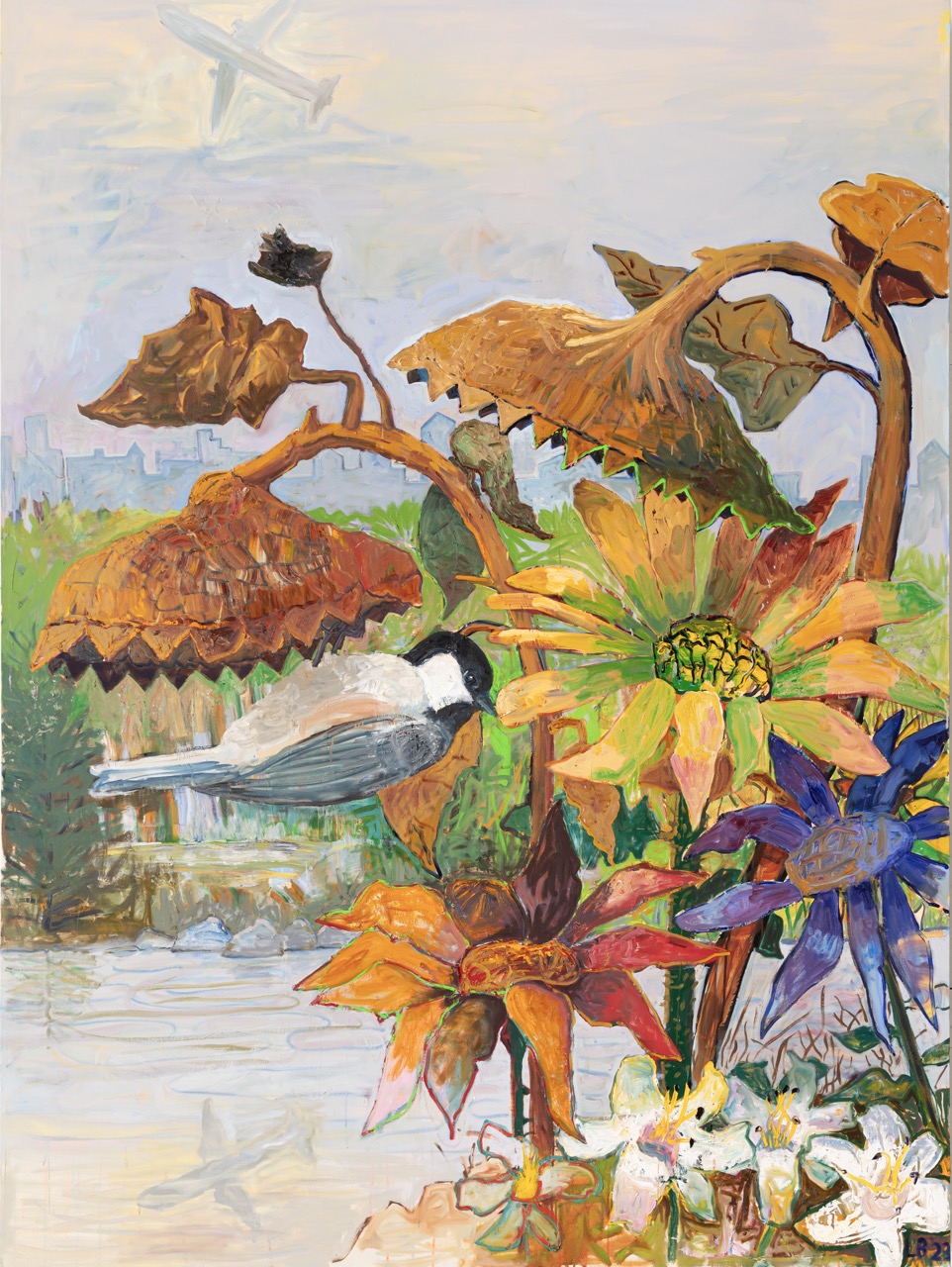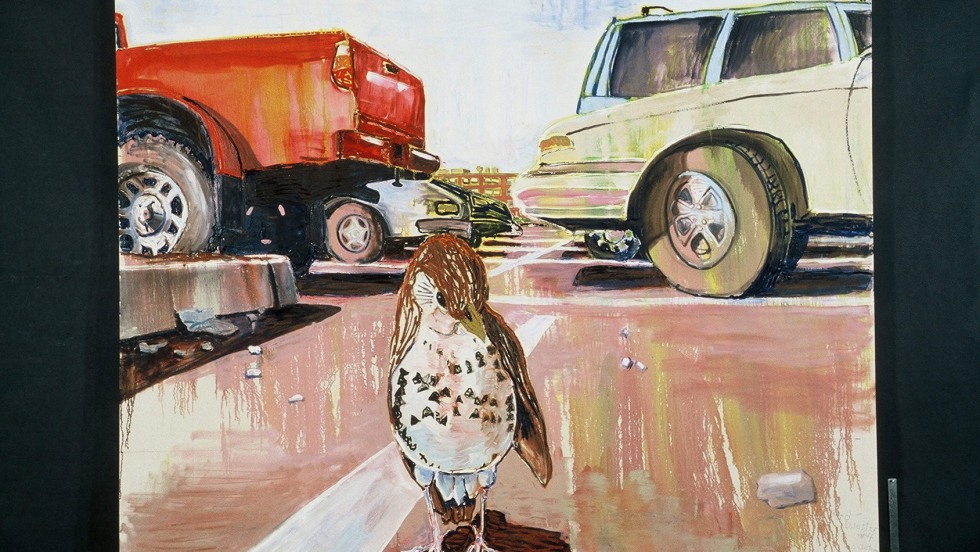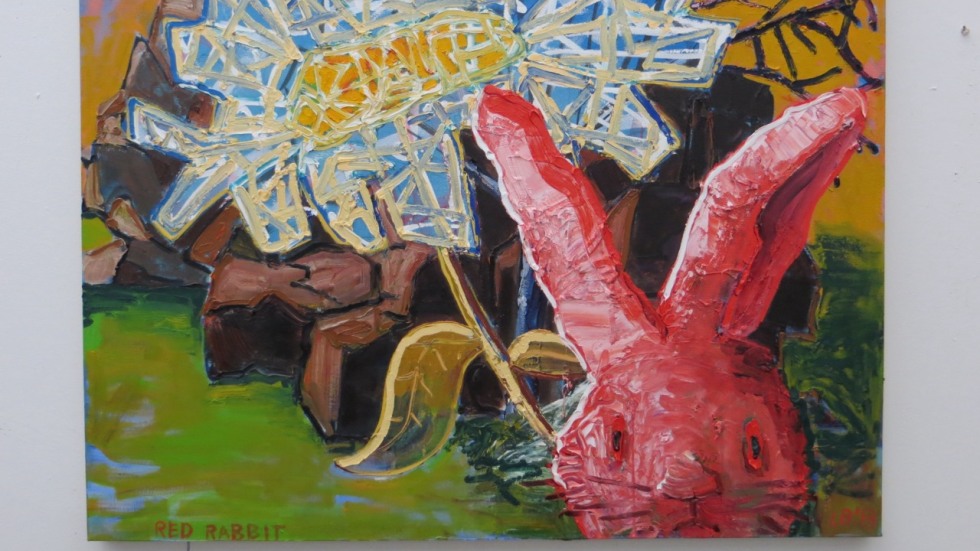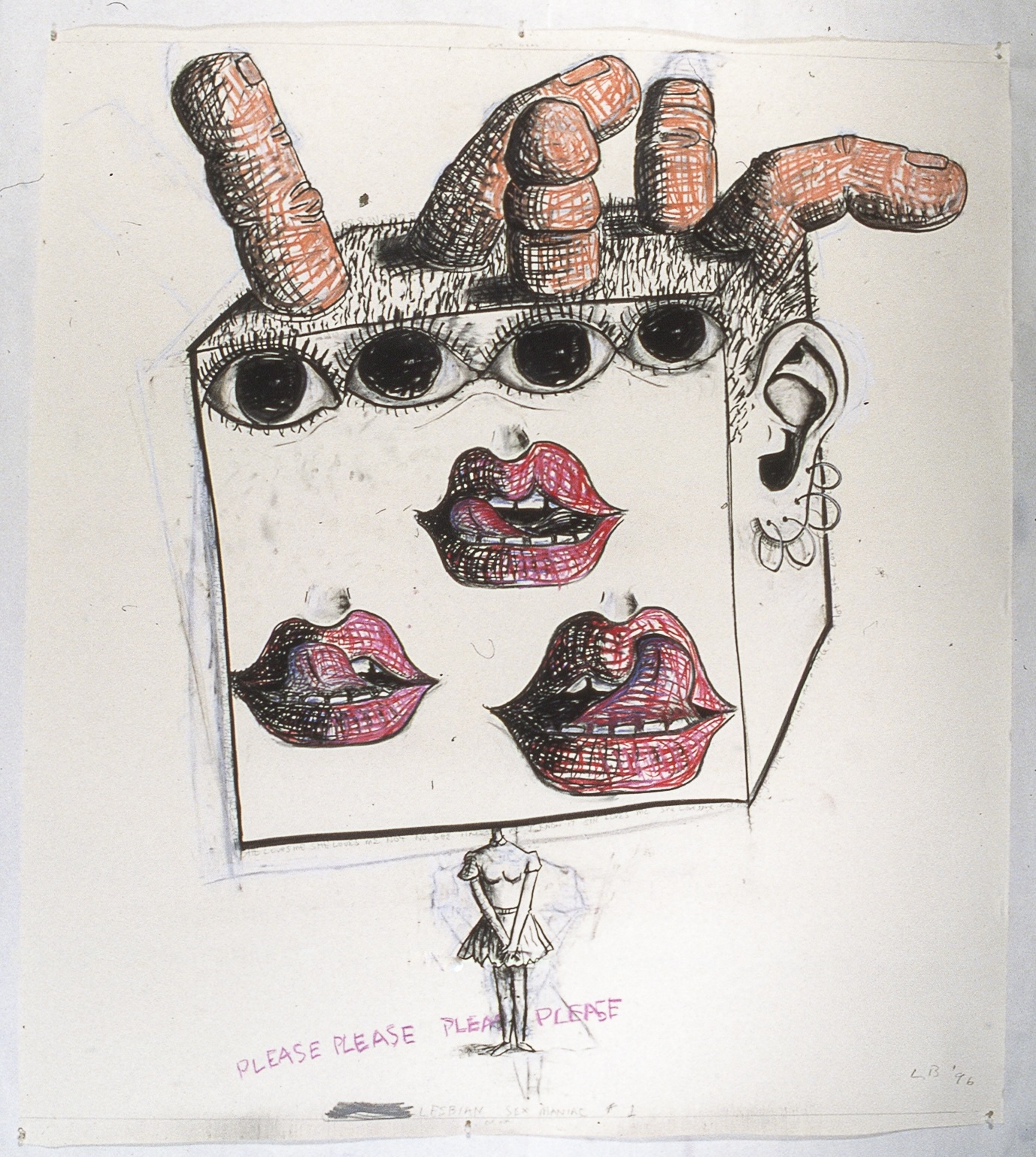PROVIDENCE, R.I. [Brown University] — Big, bright and bold, “Leslie Bostrom: Wild Stories” features eye-catching paintings that span the professor’s 36-year career at Brown, on view in the University’s Granoff Center for the Creative Arts from April 23 to June 13.
“You might call my work bombastic,” said Professor of Visual Art Leslie Bostrom. “I love color.”

The 39 paintings, collages and sketches in her retrospective exhibition are indeed full of color, but as the title suggests, they also have a strong and often political narrative, something her abstract expressionist father steered clear of in his own work.
“He was always telling me the mantra: If you could say it in words, you didn’t need to put it into a picture,” said Bostrom, who will retire from the Department of Visual Art after the academic year. “I bought into that stuff — until I didn’t.”
Raised near Poughkeepsie, New York, Bostrom attended the University of Maine. Initially, she planned to become a writer, but an adult education painting class changed that. She switched her major to art, with a focus on painting. After graduation, she headed west, working on a ranch in Montana, followed by several years living an artist’s existence in San Francisco, where she painted while working a variety of jobs to pay the bills. One of those jobs introduced her to the art of printmaking.
Bostrom returned east to attend graduate school at the Rhode Island School of Design. She eventually taught etching, wood cut and lithography there before heading further up College Hill to join Brown’s Department of Visual Art in 1986.
Finding a home for a ‘restless mind’
“When I first came, there was almost a feeling of ‘Why did Brown need an art department?’” Bostrom said.
That sentiment changed over the years as the department’s faculty and course offerings grew and diversified, she said. She played an important part in that transformation, from developing a robust printmaking program to mentoring countless students.
“Her influence as a teacher is pretty primary,” said “Wild Stories” exhibition curator Jo-Ann Conklin, who retired as director of Brown’s David Winton Bell Gallery in 2020. Conklin counts Bostrom among a cadre of artists whose contributions to their communities have been as notable as their bodies of work.
From Bostrom’s avid participation in the annual Pembroke Seminar to trading inspiration with many generations of students over the years, Brown’s student-centered learning and unique Open Curriculum have offered a perfect home for an artist with a “restless mind.”
“The students give me ideas all the time,” Bostrom said. “They’re wonderfully challenging, and I have a lot of freedom in the art department at Brown. I get to develop my own courses, play around, experiment.”






